Black and White Wedding Photography: A Timeless and Emotional Journey
When it comes to capturing the memories of your wedding day, black and white photography offers a unique perspective that’s both timeless and emotionally captivating. In this blog post, I’ll explore the enduring allure of black and white wedding photography, how it emphasizes emotions and connections, and what I love most about black and white pictures.
Timeless Elegance
Black and white photography has an enduring charm that transcends trends and evokes a sense of classic elegance. For me, black and white images stand out, focusing our attention on the subjects and their emotions. They act as a full stop in the context of a visual narrative. They stop you in your tracks and challenge you to consider it very differently to a colour photograph. Where a vintage colour photograph is immediately dateable, as in, you can tell which time period it came from, black and white has a timeless quality which makes it unique.
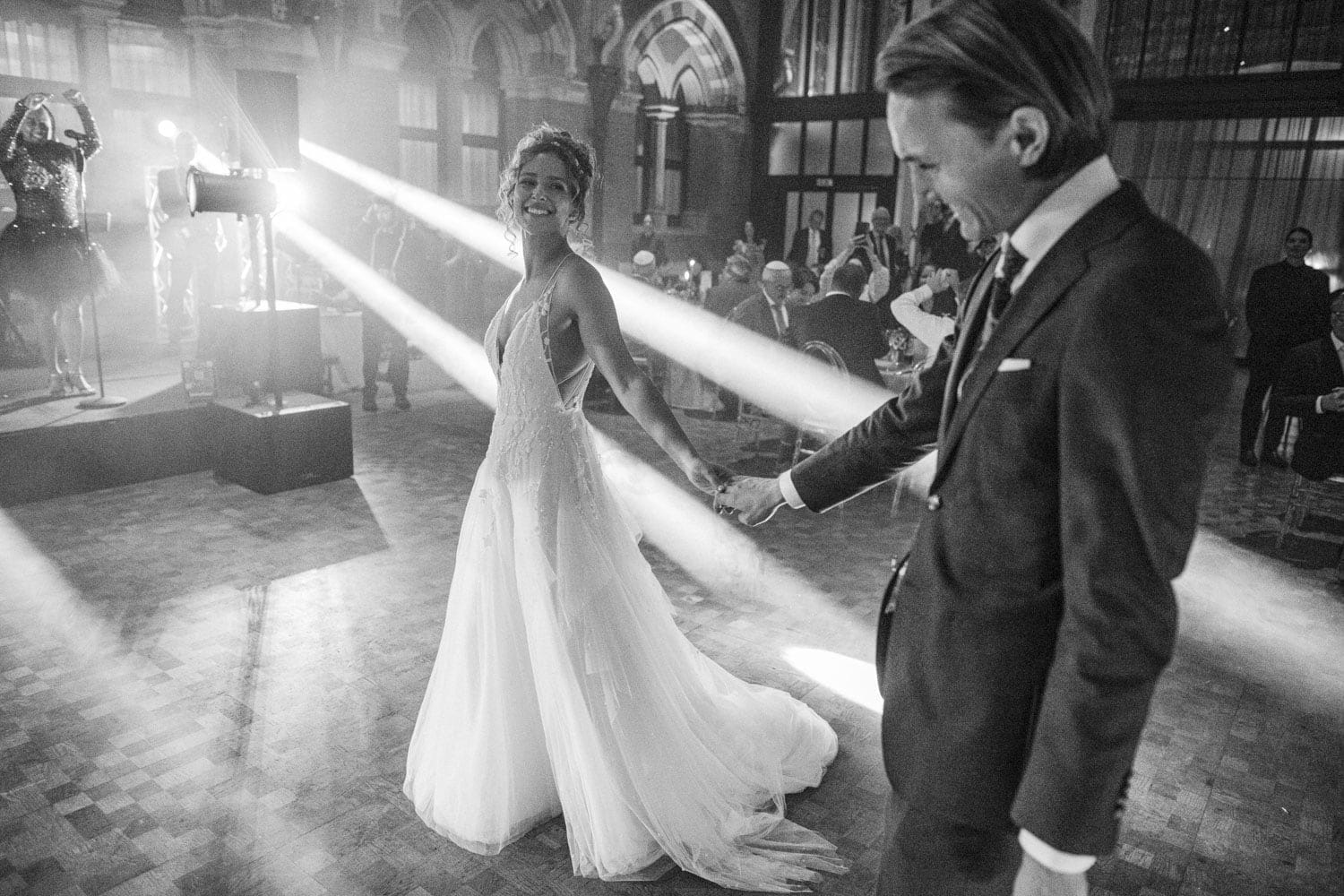
Emphasis on Emotion
One of the most significant advantages of black and white photography is its ability to convey emotions more powerfully than colour images. By stripping away the distractions of colour, the focus shifts to the subjects and their expressions, allowing the viewer to connect more deeply with the emotions being portrayed. This is particularly effective in wedding photography, where capturing genuine moments of joy, laughter, and tears is essential.
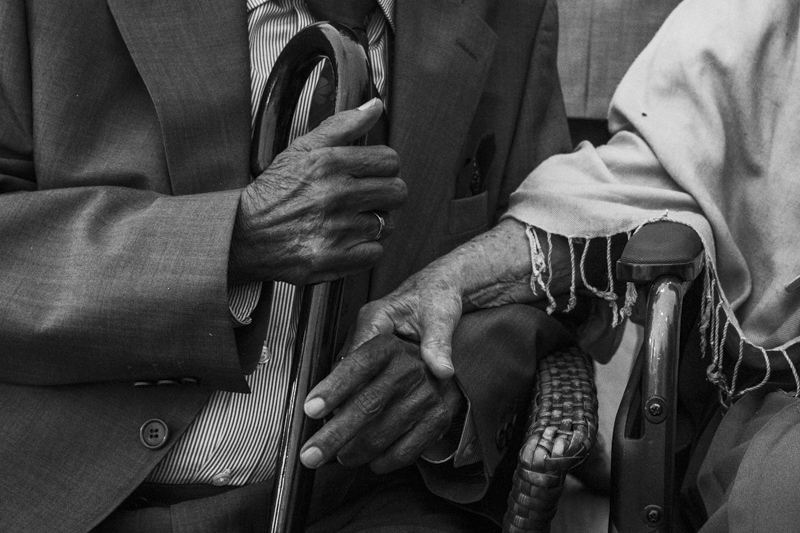
Contrast and Texture
Black and white photography emphasises contrast and texture, creating visually striking images that highlight an object, a person, or a building. Using contrast is a compositional technique that draws the eye to a particular part of a picture.
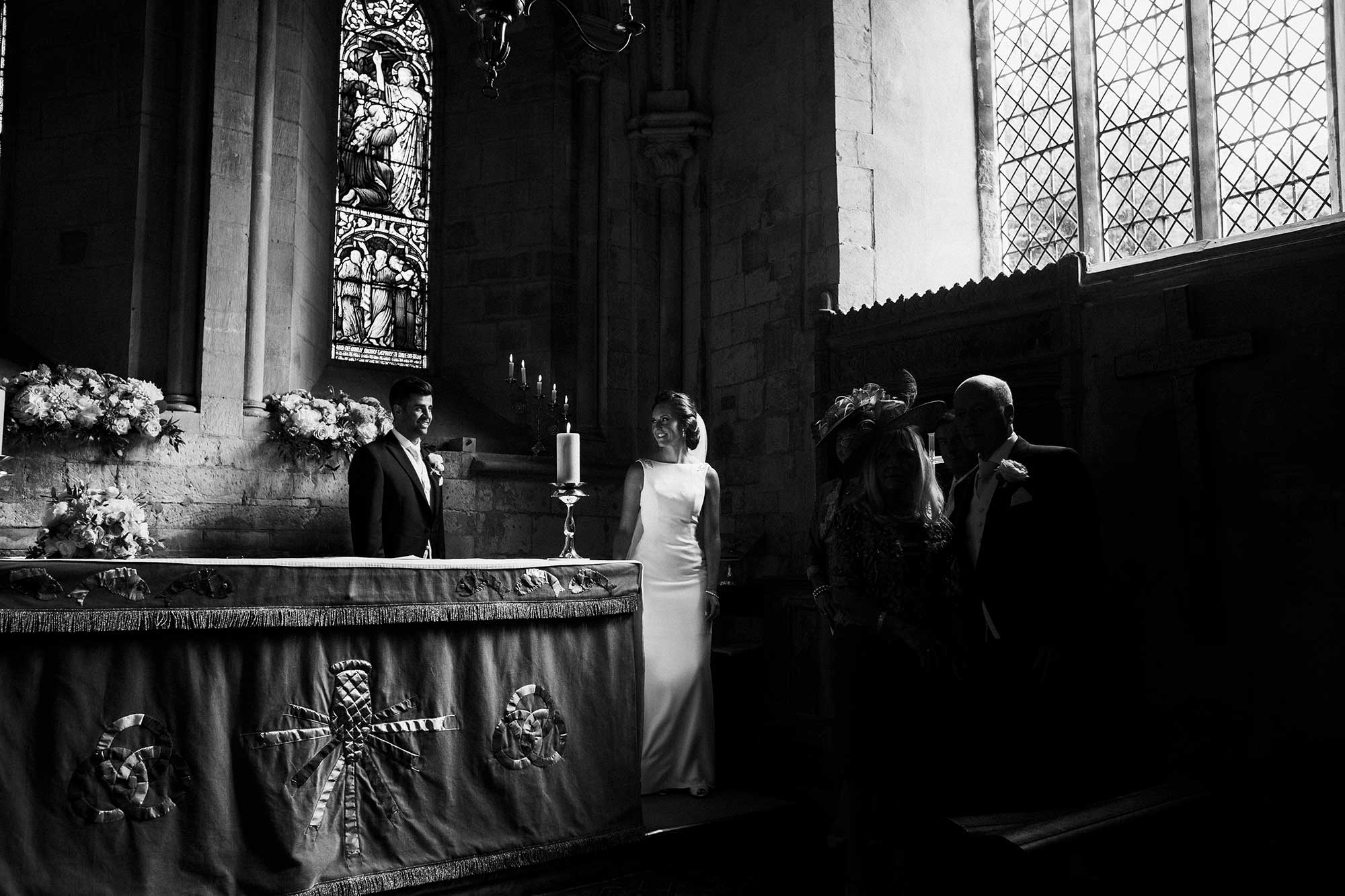

From the intricate lace of a wedding gown to the rich wood grain of an antique table, black and white images can reveal hidden nuances that might otherwise be lost in colour photographs. This focus on texture adds depth and dimension, creating images that are both visually appealing and emotionally resonant.
Artistic Vision
Choosing black and white photography for your wedding allows for a unique artistic vision and opens up creative opportunities for both the photographer and the couple. This style can be used to create a range of looks, from high-contrast images with strong shadows to soft, romantic portraits with subtle shades of grey. By exploring the possibilities of black and white photography, you can create a distinctive visual narrative that reflects your personal style and the emotion of your wedding day.
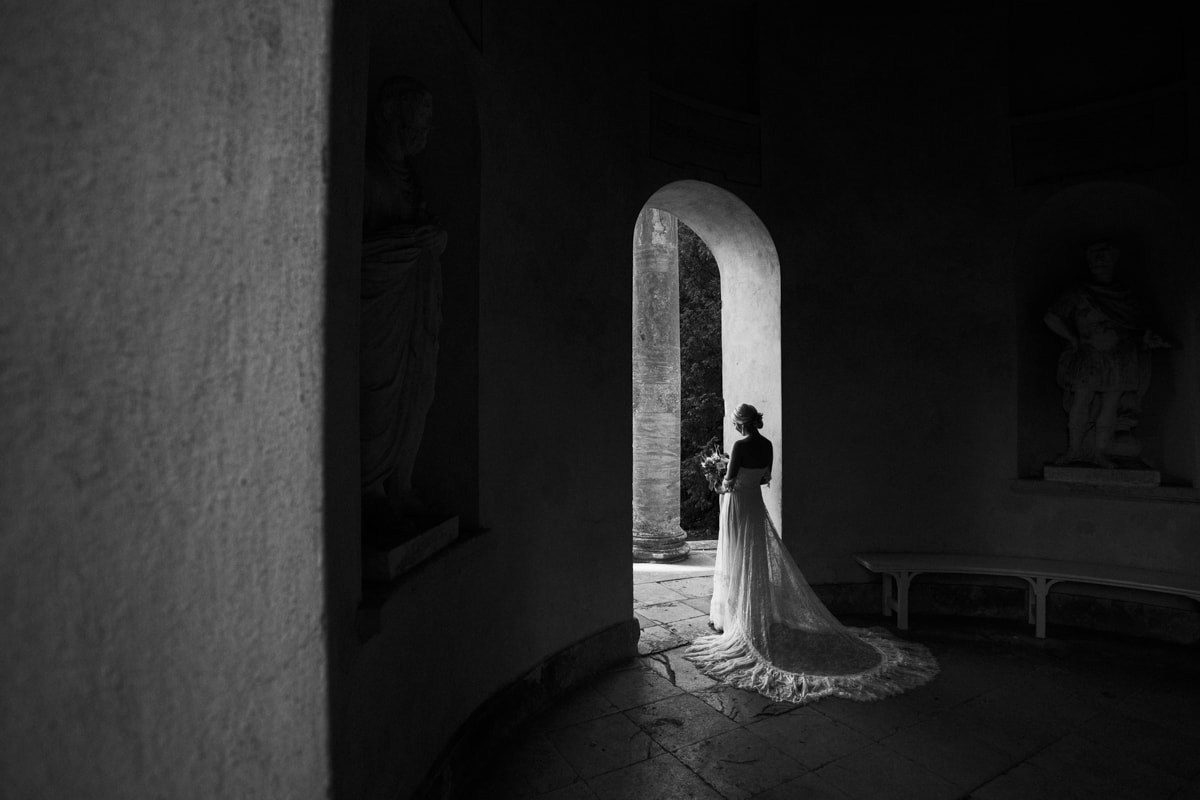
Choosing the Right Moments
Not every moment of your wedding day may be best suited for black and white photography, so it’s essential to collaborate with your photographer to select the most fitting moments. Key moments, such as the first kiss, the first dance, and candid laughter among guests, can be particularly impactful in black and white. Mixing colour and black and white images in your wedding album can create a dynamic and visually engaging collection of memories.
Black and White Wedding Photography Packages
This is a relatively new idea, but some photographers do offer a black and white only package. Why you may ask? Because if you deliver photographs in both colour and black and white you essentially have to edit each photograph twice. If you love black and white images then you might be able to save money by requesting that your images are only delivered in one format.
Why I Love Black & White Wedding Photographs
My work has been influenced by a variety of sources. From the black and white portraits of Richard Avedon to the beautifully saturated and complex compositions of William Eggleston. No doubt as I continue to develop as an artist new influences will be discovered, maybe byzantine art or the cinematography of Robert Yeoman.
Regardless of the work I am fascinated by at the time, my love of black and white documentary photography is enduring. There is a quality to black and white photography that colour cannot rival. It seems to remove the photograph from the narrative of present day and inserts it somewhere in the timeline of history. It preserves a moment and allows it to exist all on it’s own. Placed within the context of weddings black and white is a complete joy to work with. Images become immediately timeless.
There are of course instances where black and white simply doesn’t work. This is why I always shoot in colour and then convert to black and white in post processing. Sometimes, colour is absolutely imperative to give context, direction and a focal point to an image, remove it and the structure is lost. The same rules apply when making wedding albums, sometimes to maintain the structure of the page as a whole, colour or black and white has to make way for one another otherwise the balance is off.
Weddings lend themselves beautifully to black and white photography because of the day itself carries so much emotion. Emotions don’t need colour to give them structure. The gesture itself is the most moving part of the photograph, isolating it’s shape and form in black and white places emphasis upon it and increases it’s potency.
For anyone who’s interested I shoot the vast majority of the day with two lenses. 28mm and 85mm are my two favourite focal lengths. More recently I’ve been playing with 24mm & 50mm, but I’ll let you know what I think when I’ve thoroughly tested it.
The 28mm allows me to get close but still keep important elements in the width of the shot to give context. The 85mm is great for tight compositions to create drama through an almost cinematic feel. I’m not super fancy with gear, I buy what works for me. I prefer gear to be light weight and fast focusing. Both lenses tick these boxes and have never let me down.
Camera equipment can cost you tens of thousands if you let it, it can become quite easy to be swayed into purchasing gear you don’t need. The canon 28mm is about £400, the 85mm, about £300. There is of course an 85mm lens that costs £1700, its as heavy as a bowling ball and is painfully slow to focus. My mantra has always been that great photographers take great pictures, not great gear. I continually look towards my spiritual place and emotional intelligence to improve my work and not the shop window.
Edit – I’ve since started using a 24-35 f2 from Sigma, its basically three primes of 24, 28 and 35mm all in one, it’s heavy, but the versatility is incredibly useful. My work is always evolving, always being rethought, and I’ll use whatever I think helps me tell a better story, it’s one of the reasons why I love wedding photography.
All about emotion
My job as a wedding photographer is to make use of compositional tools, story telling elements – even utilising two wedding photographers to tell a better story as well as manipulating the technical elements of the camera to create an interesting image. Whether the image is in black and white or colour, these rules still apply. For me, the emotion is what carries a black and white image and that’s always what I focus on during the wedding day, the connections between people.

Black and white strips an image back to it’s most simple parts, light and dark. The eye is immediately drawn to the brightest part of any photograph. If you squint at the image it cuts out the mid-tones, you’ll notice that the grooms shirt and brides face are all very similar in terms of brightness. By using simple composition and placing the face in the centre of the frame the eye is immediately drawn to it.
The first dance is often a nightmare for a wedding photographer for a variety of reasons. Most significantly in my experience is the use of coloured lights from the DJ. Lasers and coloured LED’s can make people look like they have odd skin blotches. Things like this used to stress me out. But now, not at all. If I show black and white images on my site, my clients understand that that is predominantly how I work. I can focus on the interaction between the bride and groom, knowing that I’ll convert it to black and white after.

Children are hilarious.
This section should just end there. They’re always up to something. Some are so entertaining that it’s easy to get pulled into their world, either that or at turning 30 I’m maybe starting to think about kids. That’s a huge thought. Crikey. Let’s move on.
Update – I now have a daughter!
This little guy was toting a red ruck sack the whole day. Inspired by Dora the Explorer no doubt – fun fact ‘exploradora’ is explorer in Spanish.
Photography stuff AND fun facts, it’s all going off. Eggleston always said he thought that red was at war with all the other colours, and I have to agree. It is such an arresting colour that everything else in the scene is almost invisible, you cannot help but look at it.
In black and white that distraction is gone and the eye can freely move between both groups. Rather than being distracted by colour, the shape and form of the image becomes much more apparent. The symmetry between the groups, not only occupying equal space, but the figure on the left in the respective groups is taller than the figure on the right. Would this be apparent in colour?
Maybe. I don’t, however, believe it would be as easy to appreciate.
Subconscious Composition
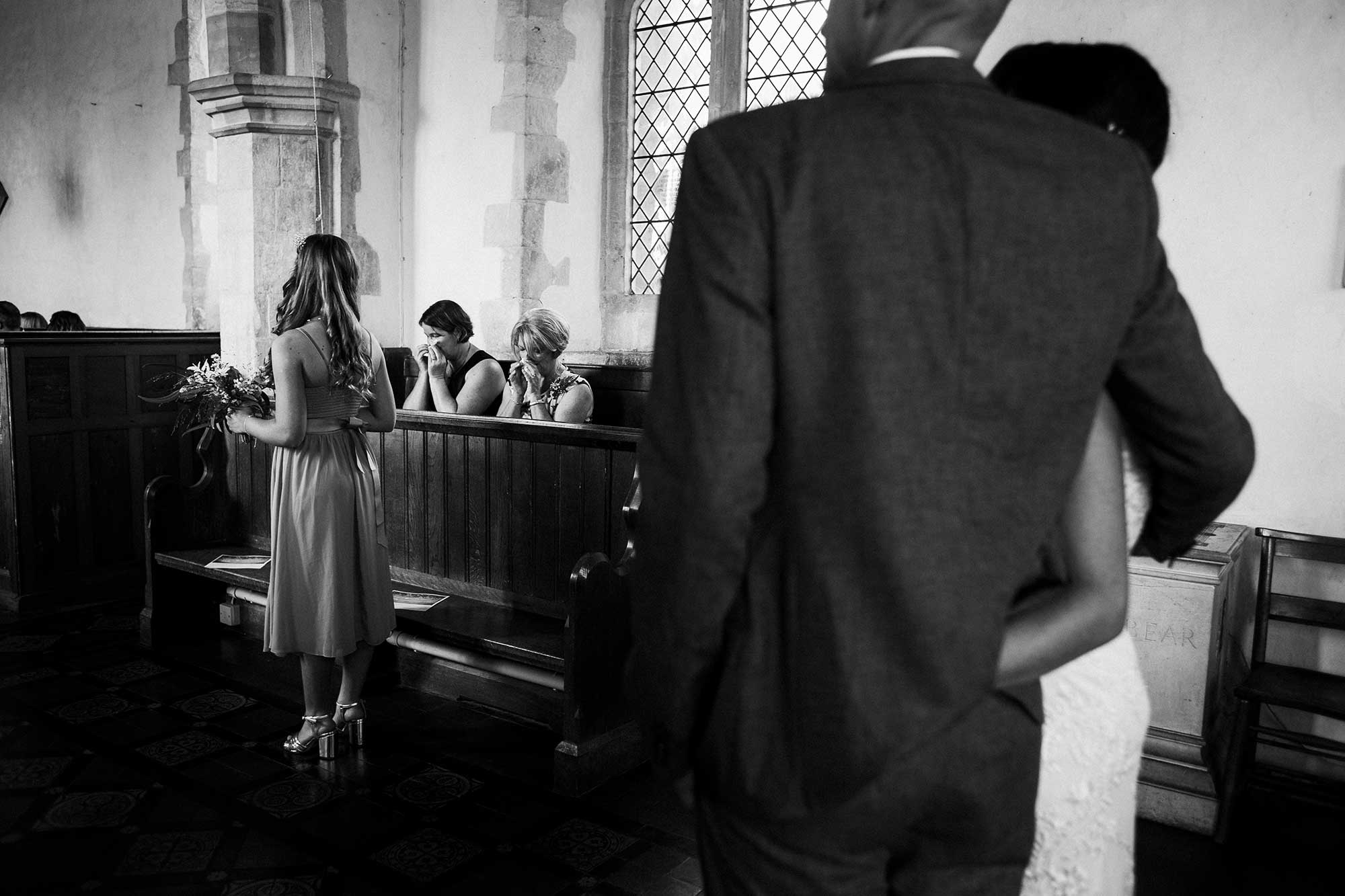
Here is a wonderful example of how practice is the game. If you’re constantly taking and reviewing photographs, I mean all the time, not just during a wedding, then you train your eye to see the world in a very specific way.
Take the above image for example. I didn’t see the moment happening and consciously think to myself “a ha, using the rule of space for the eye to move into and recognising the angular momentum of the pew, coupled with the distinct depth in the three layers of the scene in front of me will create a tremendous photograph”.
I saw what was happening, instinct kicked in and took the photograph. Is it an accident? no, my years of experience, knowledge of great images, knowledge of art and cinema took over and informed my instant decision making.
This allows me to work on instinct and has helped the development of my craft no end. I’m constantly looking for new sources of inspiration, I recently watched the Tom Ford film ‘A Single Man’ and loved his mode of storytelling, if you know of any good films to watch drop me a line.
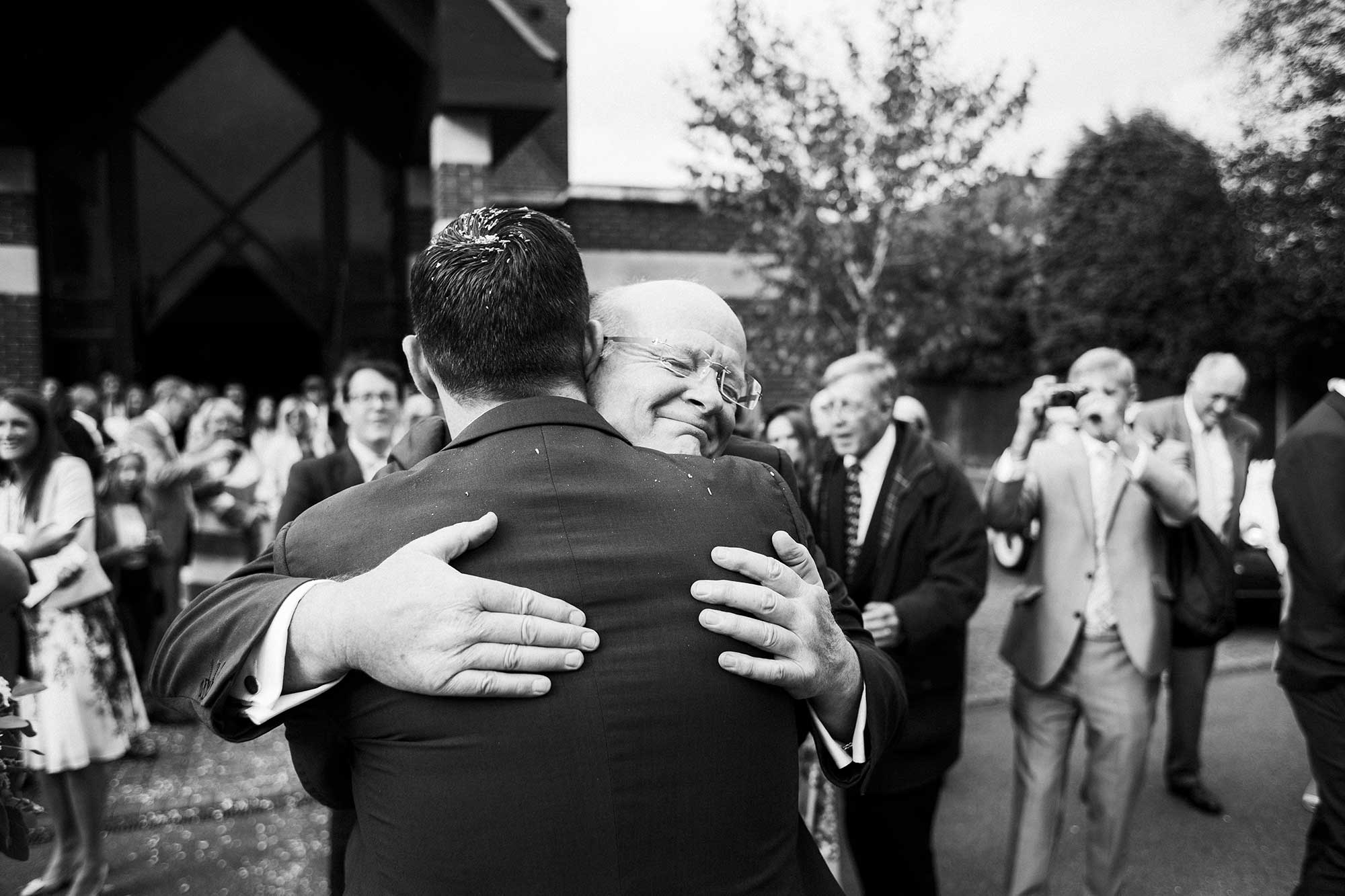
This image is a great example of how composition can’t always be perfect and the moment takes centre stage.
If I’d have waited a split second to consider how it is slightly off centre I would have missed the moment. Hands are wonderful communicators of emotion. We hold on to things we love, we pull them close. It’s so easy to empathise with images like this, I mean really empathise, you can feel the squeeze.
Removing the colour helps communicate the intensity of the moment. The distractions of the background are gone and the textures of the hands and face take centre stage allowing the viewer to once again really empathise with the moment.
The unpredictable is where the magic happens
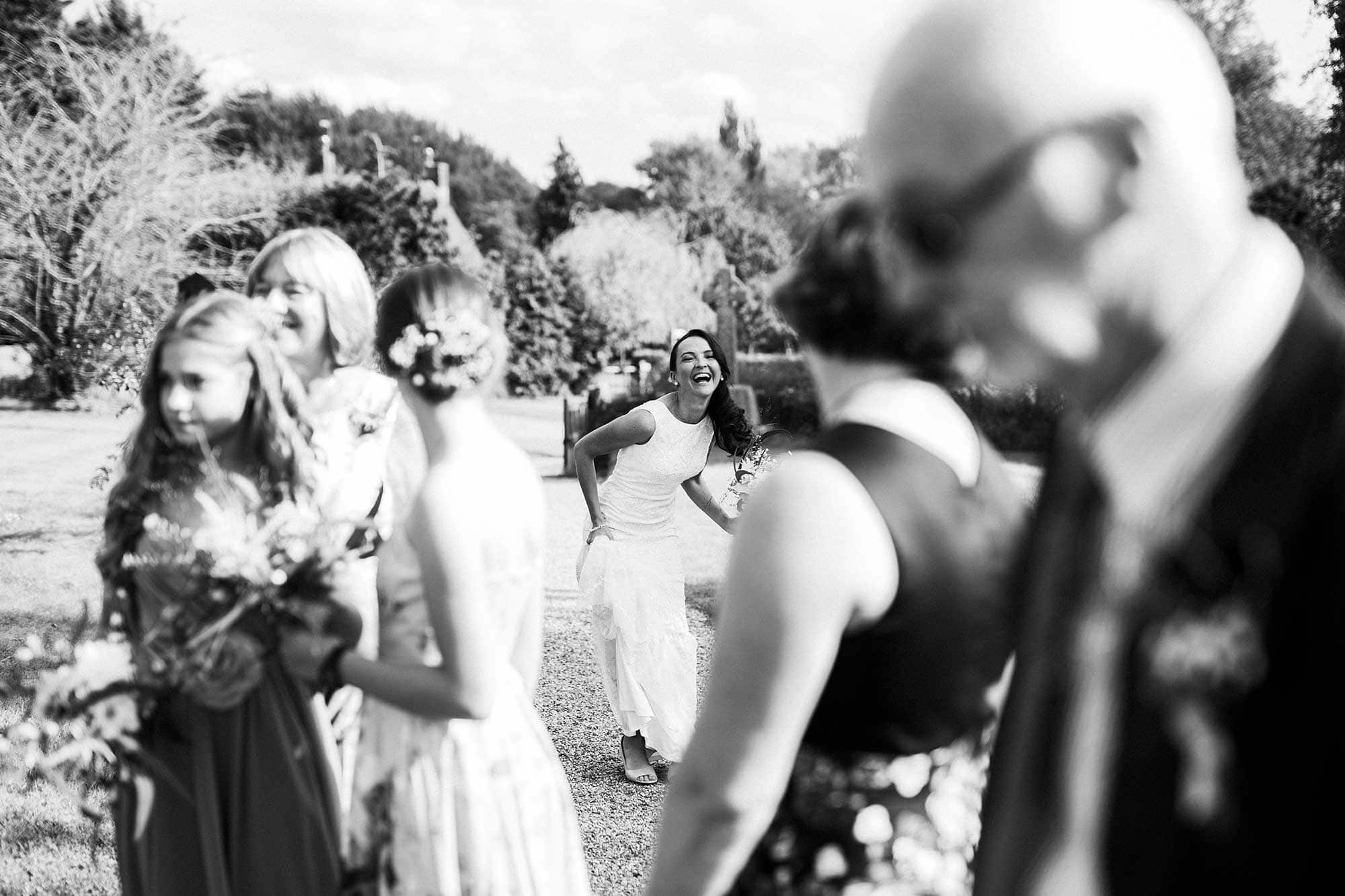
For every photograph like this, there’s a hundred more where someone walks right in front of the shot.
You can’t complain, it’s part of the game. If you’re shooting in a hectic environment, it’s unpredictable, even when you think you understand the nature of a crowd they will always do something to surprise you.
Every now and again, the stars align and a moment happens just at the right time, the composition comes together and frames that moment to create an image that could never be recreated.
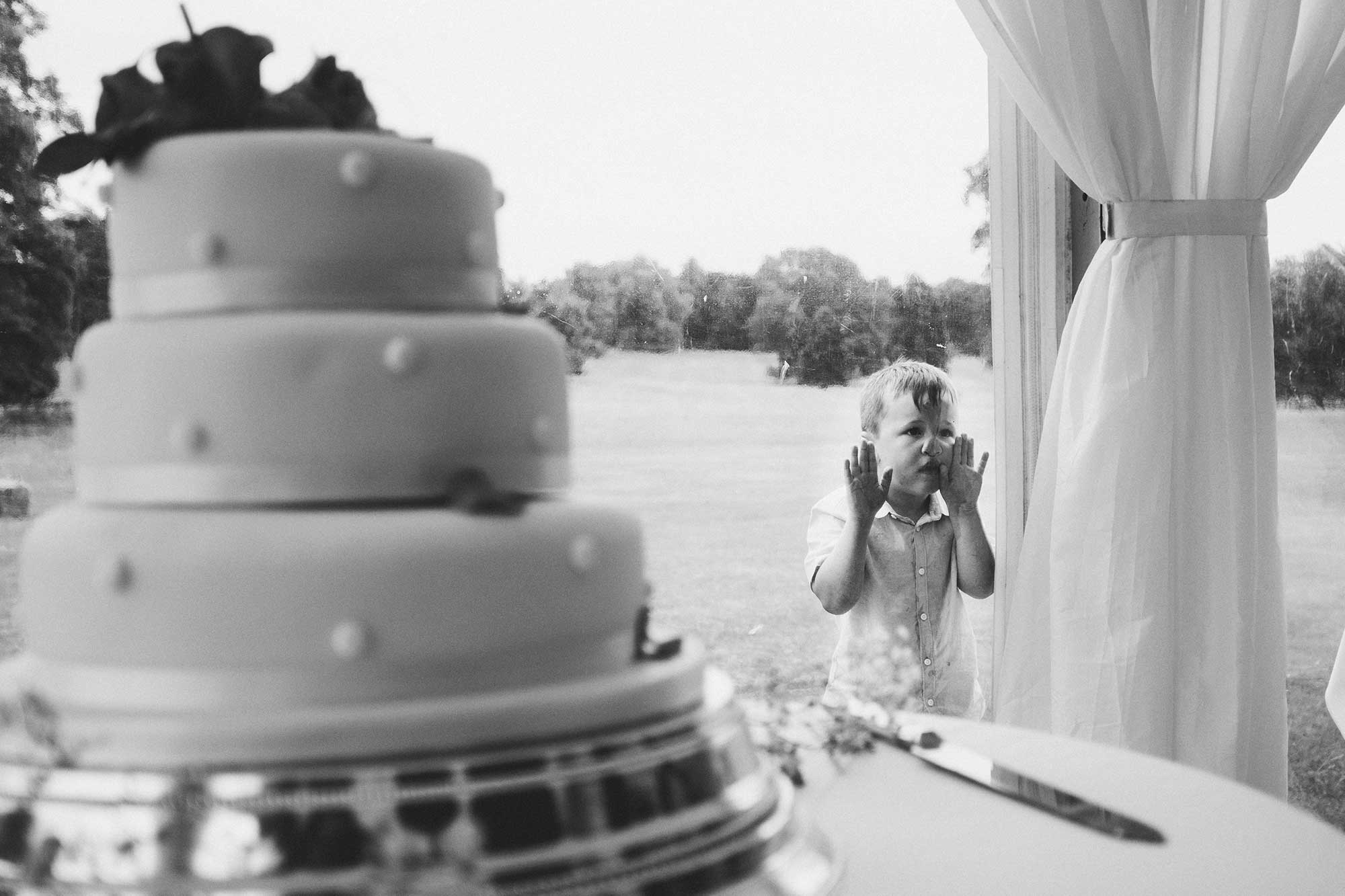
Equally, for every shot you get, there’s plenty more that you miss. You can’t be everywhere at once. This is a mistake I made early on in my career, I would chase moments. Timing is such an important factor in any career. Comedy, acting, athletics.
Time your moves deliberately and precisely, exact patience and the rewards will come. You have to sit back and believe that the images will come to you. For this image, that’s exactly what happened. It’s common for the bride and groom to move straight from the cutting of the cake to the first dance. This little guy was running around outside and I took a chance, waited, then pow, he does this.
Colour is important too
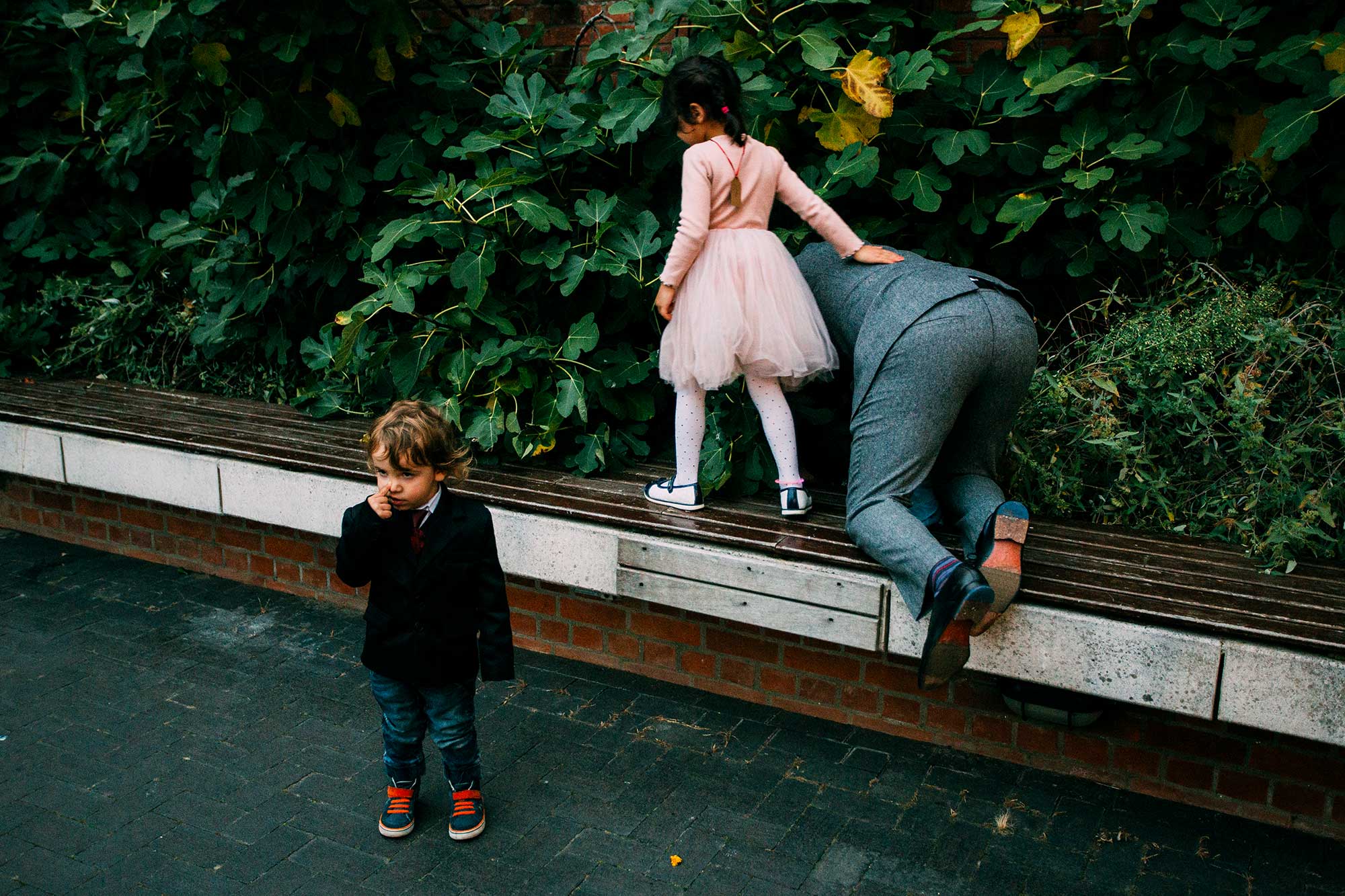
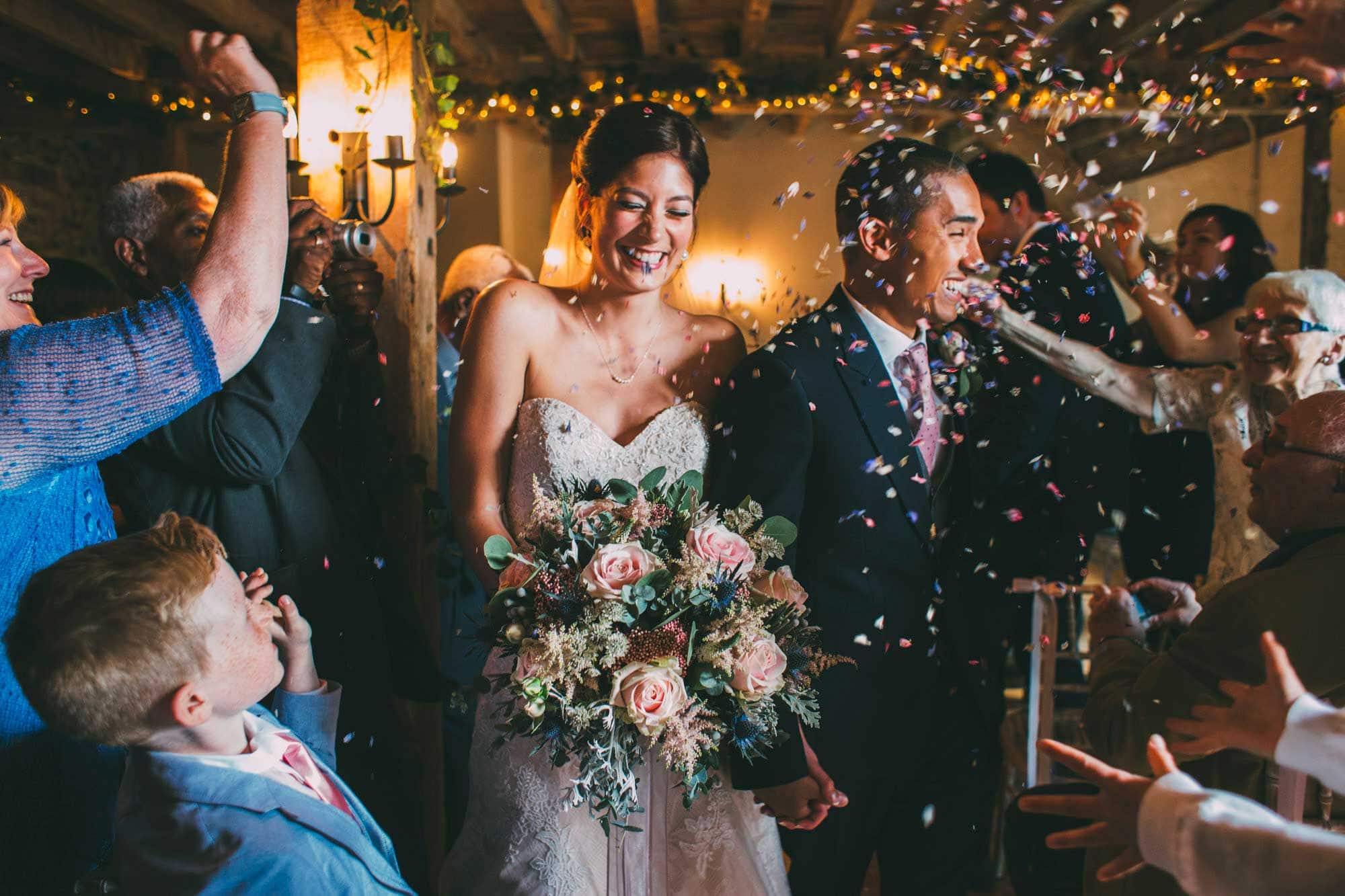
As much as I love black and white wedding photography, sometimes it simply doesn’t work. Often an image has to be one or the other, it cannot work as both. When you remove colour from an image, a dimension that was already present should be increased in potency.
The touch, gaze, laugh etc. If it detracts, then it needs the colour for harmony. Lets not forget that beyond my desire to create beautiful photographs, there is a client on the other side of the images. They may have planned a specific style and colour scheme, this is why ninety percent of the images will be delivered in colour and black and white.
I hope this piece was useful and offers a little bit more of an insight into how I approach taking pictures and my philosophy.
Here’s a few recent favourites to round off with.


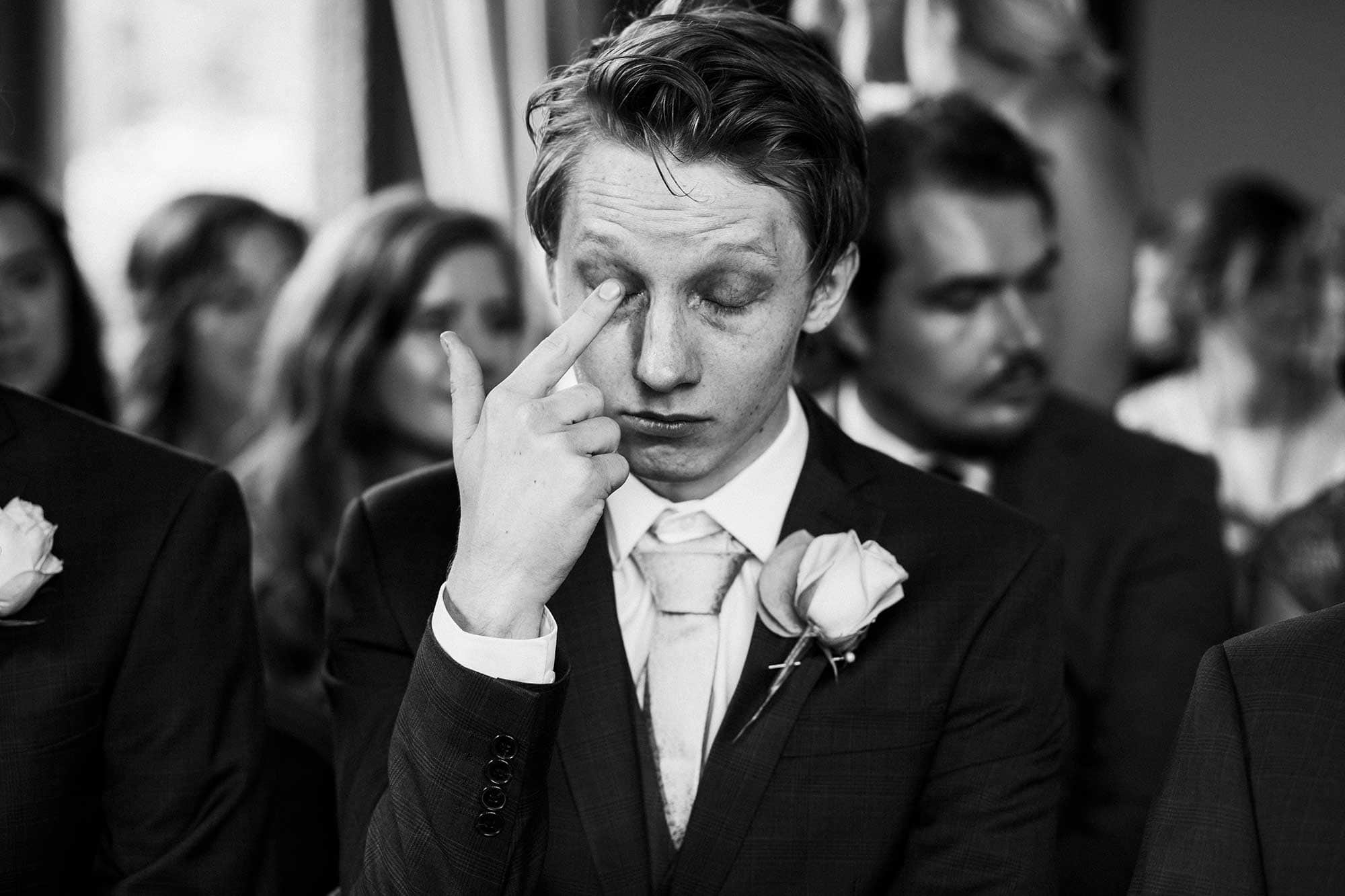
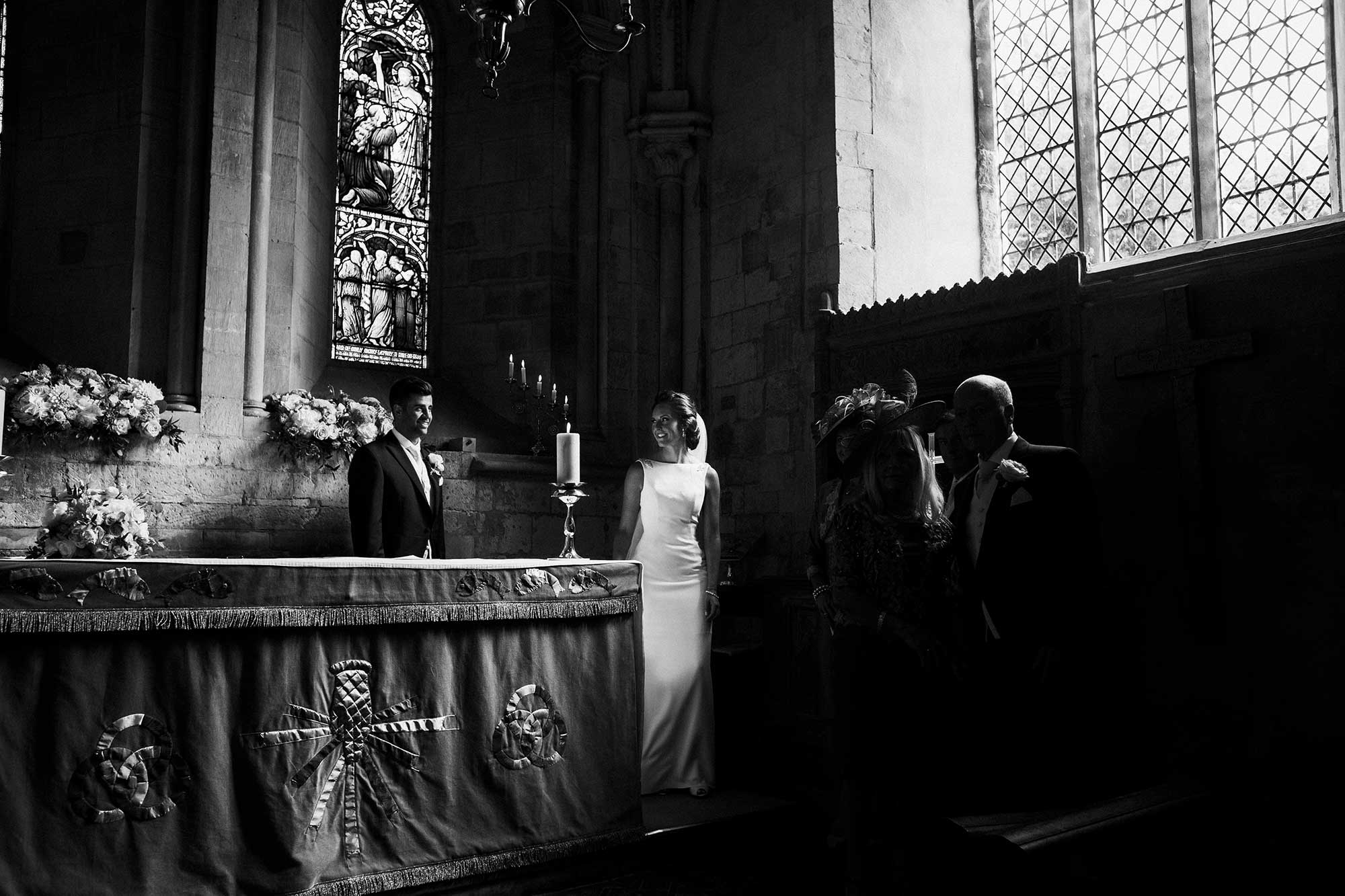

Liam Smith…intergalactic black and white wedding photographer.
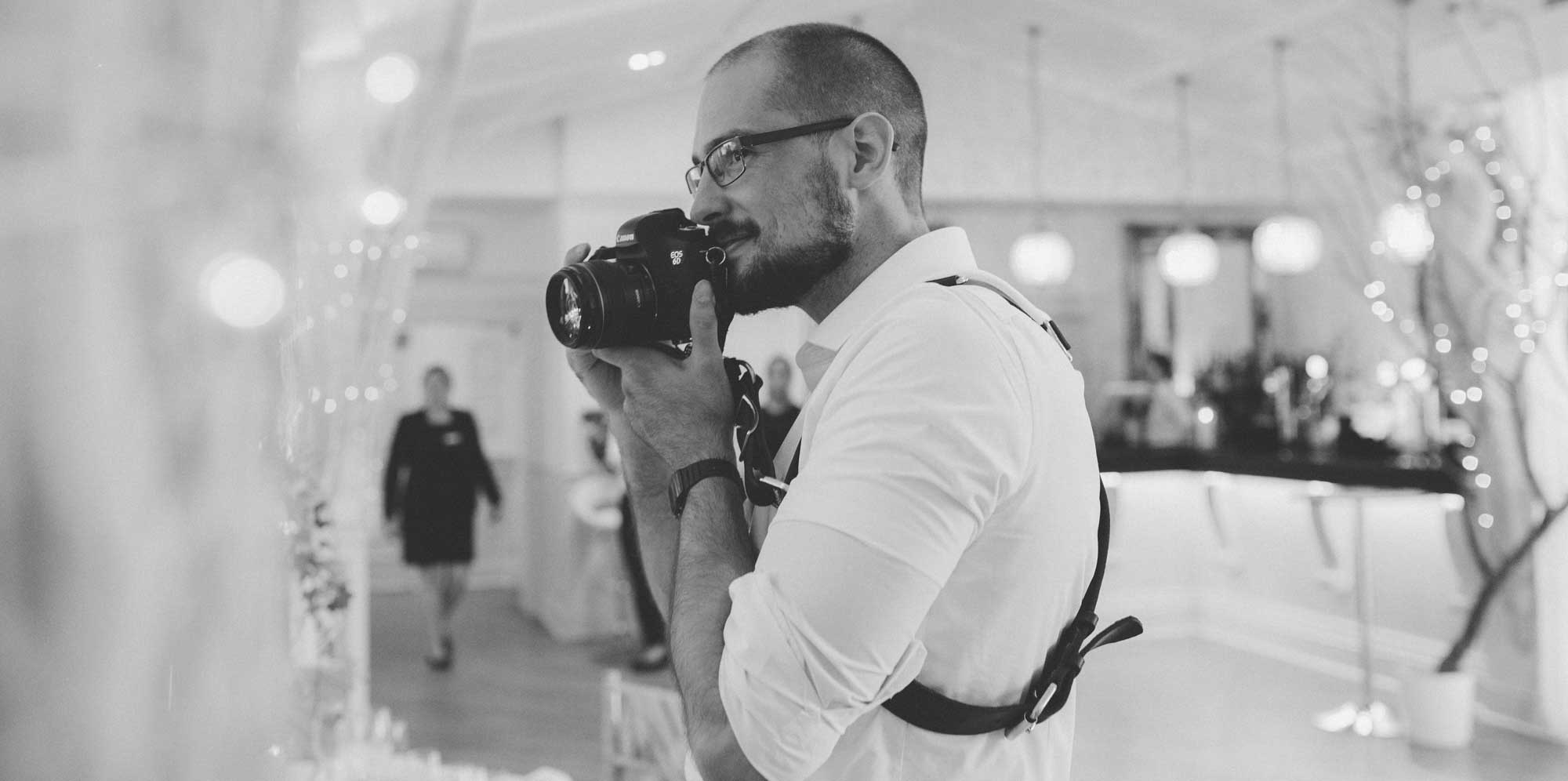
Want To See More of My Work?
Click below to view the portfolio and see more of my pictures from around the country and beyond
